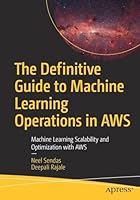
Cloud Computing: Methodology, Systems, and Applications
- Length: 844 pages
- Edition: 1
- Language: English
- Publisher: CRC Press
- Publication Date: 2011-10-03
- ISBN-10: 1439856419
- ISBN-13: 9781439856413
- Sales Rank: #9452312 (See Top 100 Books)
Cloud computing has created a shift from the use of physical hardware and locally managed software-enabled platforms to that of virtualized cloud-hosted services. Cloud assembles large networks of virtual services, including hardware (CPU, storage, and network) and software resources (databases, message queuing systems, monitoring systems, and load-balancers).
As Cloud continues to revolutionize applications in academia, industry, government, and many other fields, the transition to this efficient and flexible platform presents serious challenges at both theoretical and practical levels—ones that will often require new approaches and practices in all areas. Comprehensive and timely, Cloud Computing: Methodology, Systems, and Applications summarizes progress in state-of-the-art research and offers step-by-step instruction on how to implement it.
Summarizes Cloud Developments, Identifies Research Challenges, and Outlines Future Directions
Ideal for a broad audience that includes researchers, engineers, IT professionals, and graduate students, this book is designed in three sections:
- Fundamentals of Cloud Computing: Concept, Methodology, and Overview
- Cloud Computing Functionalities and Provisioning
- Case Studies, Applications, and Future Directions
It addresses the obvious technical aspects of using Cloud but goes beyond, exploring the cultural/social and regulatory/legal challenges that are quickly coming to the forefront of discussion. Properly applied as part of an overall IT strategy, Cloud can help small and medium business enterprises (SMEs) and governments in optimizing expenditure on application-hosting infrastructure. This material outlines a strategy for using Cloud to exploit opportunities in areas including, but not limited to, government, research, business, high-performance computing, web hosting, social networking, and multimedia.
With contributions from a host of internationally recognized researchers, this reference delves into everything from necessary changes in users’ initial mindset to actual physical requirements for the successful integration of Cloud into existing in-house infrastructure. Using case studies throughout to reinforce concepts, this book also addresses recent advances and future directions in methodologies, taxonomies, IaaS/SaaS, data management and processing, programming models, and applications.
Table of Contents
Part I. Fundamentals of Cloud Computing: Concept, Methodology, and Overview
Chapter 1. Cloud Computing: An Overview
Chapter 2. Cloud Computing and Startups
Chapter 3. A Taxonomy of Interoperability for IaaS
Chapter 4. A Taxonomy Study on Cloud Computing Systems and Technologies
Chapter 5. A Network-Oriented Survey and Open Issues in Cloud Computing
Chapter 6. A Taxonomy of QoS Management and Service Selection Methodologies for Cloud Computing
Chapter 7. An Introduction to Open-Source IaaS Cloud Middleware
Chapter 8. Cloud Computing: Performance Analysis
Chapter 9. Intercloud: The Future of Cloud Computing. Concepts and Advantages
Part II. Cloud Computing Functionalities and Provisioning
Chapter 10. TS3: A Trust Enhanced Secure Cloud Storage Service
Chapter 11. High Performance Computing Clouds
Chapter 12. Multitenancy: A New Architecture for Clouds
Chapter 13. SOA and QoS Management for Cloud Computing
Chapter 14. Auto-Scaling, Load Balancing and Monitoring in Commercial and Open-Source Clouds
Chapter 15. Monitoring: A Fundamental Process to Provide QoS Guarantees in Cloud-Based Platforms
Chapter 16. Cloud Bursting: Managing Peak Loads by Leasing Public Cloud Services
Chapter 17. Energy-Efficiency Models for Resource Provisioning and Application Migration in Clouds
Chapter 18. Security, Privacy and Trust Management Issues for Cloud Computing
Part III. Case Studies, Applications, and Future Directions
Chapter 19. Fundamentals of Cloud Application Architecture
Chapter 20. An Ontology for the Cloud in mOSAIC
Chapter 21. On the Spectrum of Web Scale Data Management
Chapter 22. Leasing Videoconference Resources on Hybrid Clouds
Chapter 23. Advanced Computing Services for Radiotherapy Treatment Planning
Chapter 24. Cloud Security Requirements Analysis and Security Policy Development Using HOOMT
Chapter 25. Exploring the Use of Hybrid HPC-Grids/Clouds Infrastructure for Science and Engineering
Chapter 26. RestFS: The Filesystem as a Connector Abstraction for Flexible Resource and Service Composition
Chapter 27. Aneka Cloud Application Platform and Its Integration with Windows Azure

Securing an Enterprise: Maximizing Digital Experiences through Enhanced Security Measures






